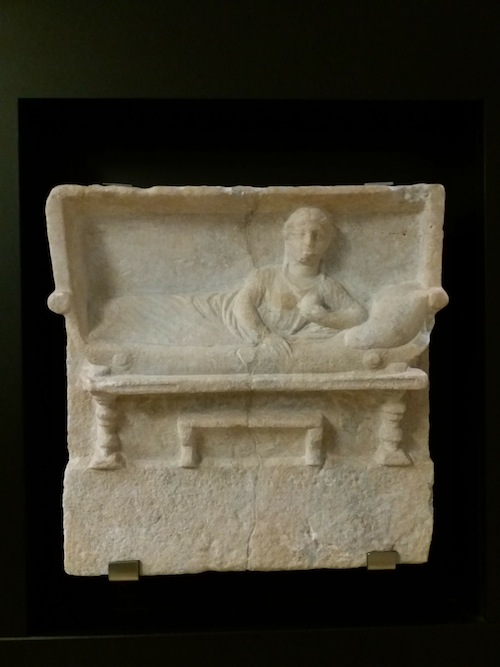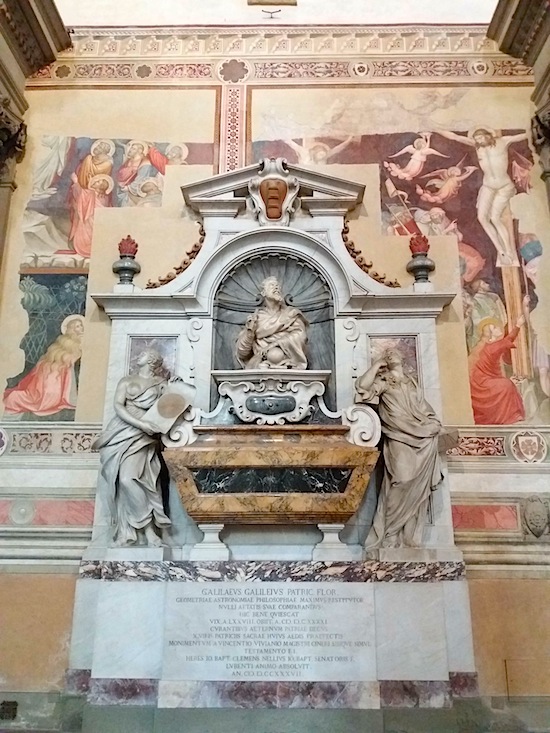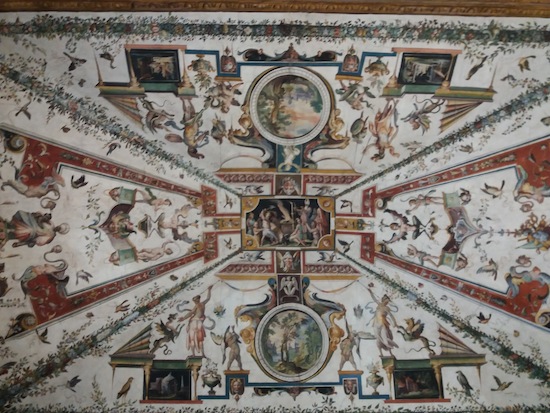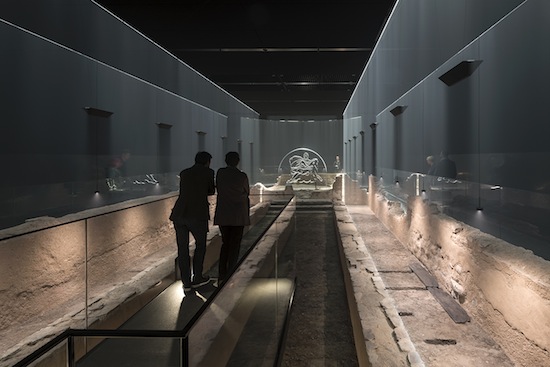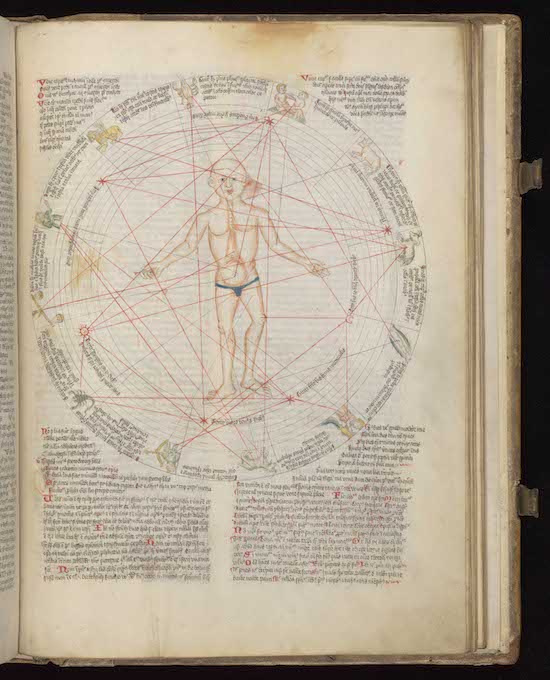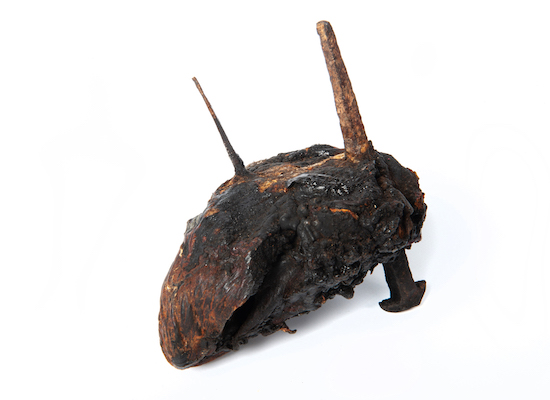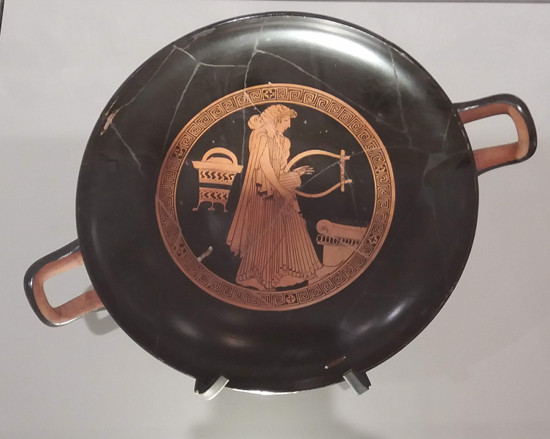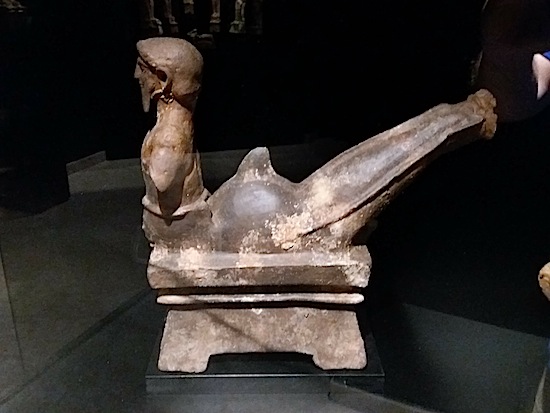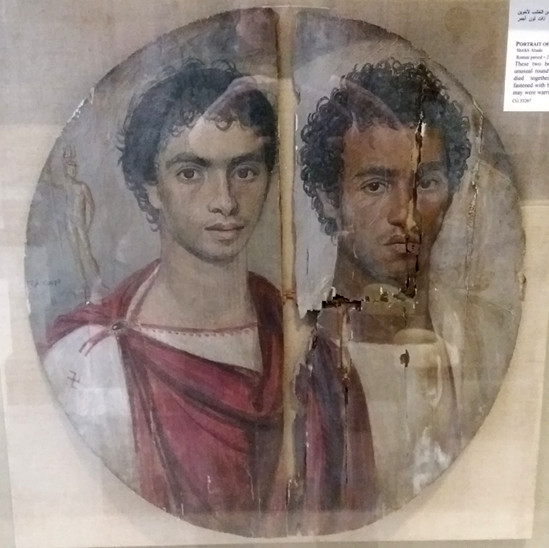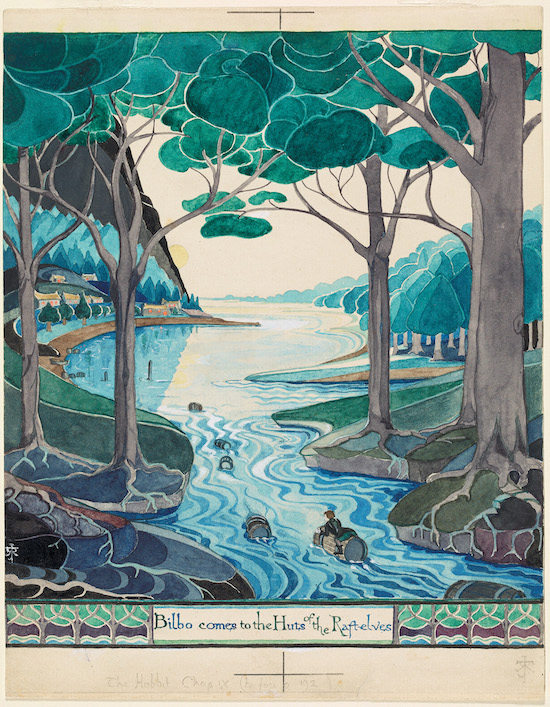
Bilbo comes to the Huts of the Raft-elves, a watercolor Tolkien
painted for the first edition of The Hobbit, published in 1937.
Bilbo is seen sitting astride a barrel floating down the forest river,
having helped the dwarves (who are hidden inside the wine barrels) to
escape from the dungeons of the Elvenking. This was Tolkien’s favorite
watercolor and he was disappointed to find that it had been omitted from
the first American edition. Credit: © The Tolkien Estate Limited 1937.
The University of Oxford’s Bodleian Library has launched the largest exhibition on J.R.R. Tolkien in a generation.
Tolkien: Maker of Middle-Earth showcases the library’s extensive collection of Tolkien’s papers, manuscripts, letters, and artwork, the largest of its kind in the world. The exhibition, which includes some 200 items, also brings together items from private collections and Marquette University’s Tolkien Collection.
J.R.R. Tolkien (1892–1973) spent most of his adult life in Oxford. He came to Oxford University in 1911, aged nineteen, to study Classics at Exeter College, but later switched to English. After serving in France during World War One, he returned to Oxford to work on the New English Dictionary (later the Oxford English Dictionary), while tutoring in English. After five years at Leeds University as Reader and then Professor of English Language, he returned to Oxford in 1925 and remained there for the rest of his working life, first as Professor of Anglo-Saxon from 1925 to 1945, and later as Professor of English Language and Literature from 1945 to 1959. He is buried with his wife, Edith, in Wolvercote Cemetery in Oxford.
…
Read More Read More
